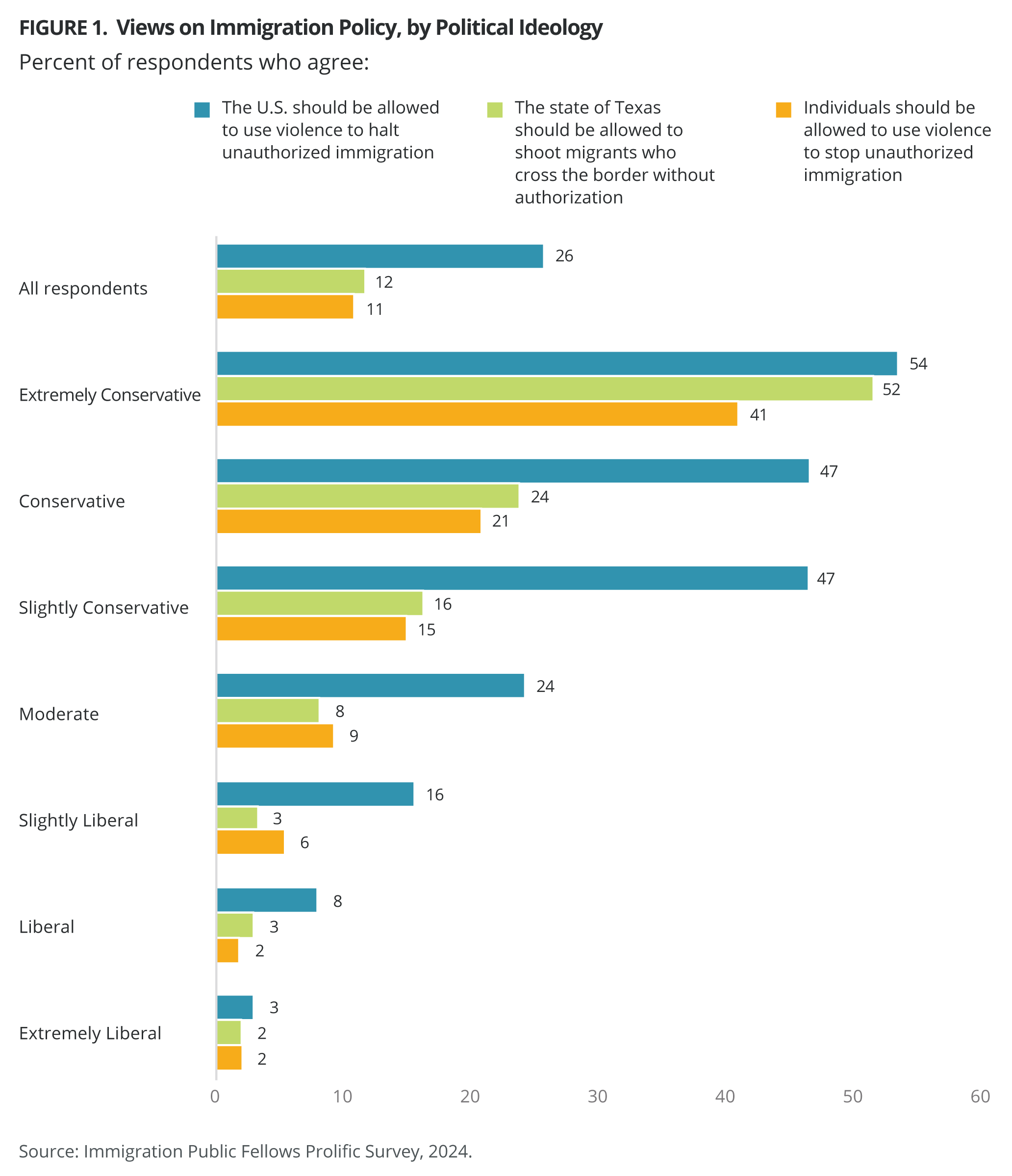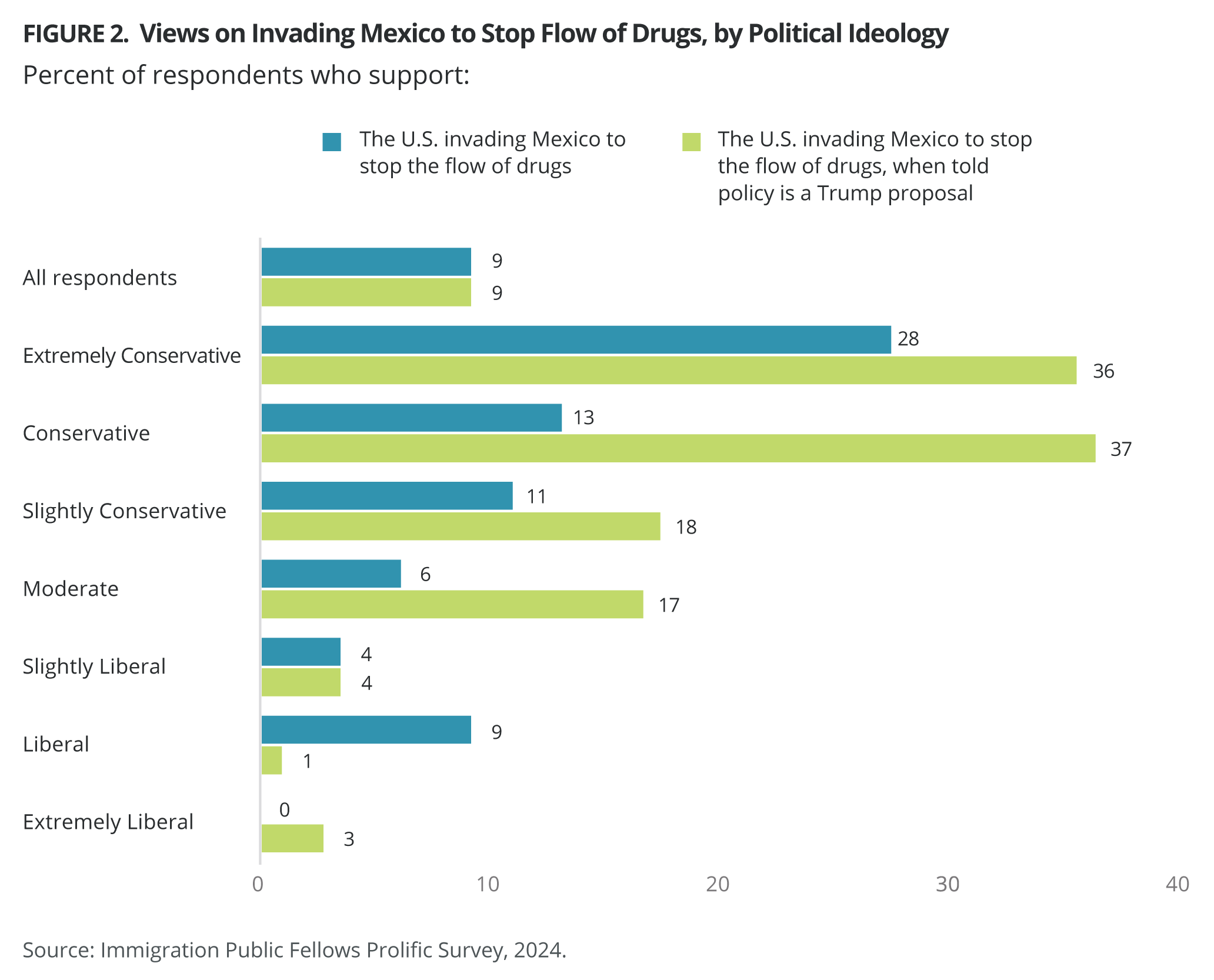Drs. Emily Frazier, Will McCorkle, Veronica Montes, and Amina Zarrugh were 2023-2024 PRRI Public Fellows studying the intersection of politics, religion, and immigration/migration. This Spotlight Analysis details the findings of their original, collaborative research conducted with support from PRRI.
In his acceptance speech at the 2024 Republican National Convention, former President Donald Trump outlined his vision for the country if re-elected. Curtailing immigration — especially at the southern border — is central to Trump’s plans for his second term, and immigration issues rank at the top of the GOP platform. “No hope or dream that we have for America can succeed unless we stop the illegal immigrant invasion,” Trump stated. As in 2016, Trump’s political platform uses alarmist and violent language to characterize migrants. In his words, immigration is an “invasion,” migrants are “killers and criminals,” and those seeking to cross the southern border pose an economic, cultural, and even physical threat to American families. This Spotlight Analysis explores Americans’ attitudes about policies at the southern border, including violent, extreme deterrence policy proposals, which are particularly relevant today. We find that across an array of questions, participants who self-identified as politically “conservative” or “very conservative” registered heightened levels of support for violent or militaristic policy positions concerning immigration and the southern border.
Extreme Views on Immigration
Since 2016, Trump has successfully shifted the national discourse on immigration by stoking fear and xenophobia, pushing Republican positions on immigration far to the right, and further politicizing immigration issues through alarmist rhetoric and restrictive immigration policies.
This shift has material consequences, as once-extreme positions seem to be becoming increasingly mainstream. In 2023, more than four in ten Americans (44%) favored installing deterrents such as walls, floating barriers in rivers, and razor wire to prevent immigrants from entering the country illegally, regardless of if these measures could endanger or kill people; the percentage was particularly high among Republicans (77%), compared with 44% of independents and only 15% of Democrats, according to the 2023 PRRI American Values Survey.
As members of the 2023-2024 PRRI Public Fellows Immigration Pod, we conducted a nationwide survey examining Americans’ views on immigration and immigration policy through Prolific. We surveyed a nonprobability sample of 2,009 participants with questions measuring perceptions of and attitudes towards immigration, including whether immigration should be increased or decreased and views on asylum seekers and refugees. While participants were volunteers (e.g. not a random sample), we employed gender, education, and age quotas to ensure a more representative sample of national demographic patterns.
We asked respondents whether the U.S. should be allowed to use violence to halt unauthorized immigration. While only one in four survey participants agreed with this notion (24%), participants who self-identified as politically “conservative” (47%) or “extremely conservative” (54%) were at least twice as likely to agree. We also asked a subset of the sample what they thought of a policy that would allow the state of Texas to shoot migrants who crossed the border without authorization. While only 12% of respondents agreed with this idea, 24% of self-identified “conservatives” and a striking 52% of those who described themselves as “extremely conservative” agreed.
In recent years, debates over migration have emerged about the extent to which individuals, such as property owners, have the right to use violence that is otherwise reserved to the state. Arizona legislators proposed legislation just this year that would allow landowners to shoot migrants who come onto their land. Similarly, in a radio show appearance, Republican Texas Governor Greg Abbott commented that the state does not shoot migrants who cross the border, “because, of course, the Biden administration would charge us with murder.” Such extreme language is deeply concerning for those who care about human rights. Voicing such threats against migrants is the first step in dehumanizing them, thus opening the door to violence against them, as was the case in the mass shooting on August 9, 2019 at a Walmart in El Paso, which explicitly targeted immigrants.
When our survey asked if individuals should be allowed to use violence to stop unauthorized immigration, only 9% of study participants agreed. But, among conservatives, there was 21% agreement, and among those who identified as “extremely conservative,” agreement was 41%.

One facet of our survey highlighted a particularly troubling trend. Participants were asked about their perceptions of the U.S. invading Mexico to stop the flow of drugs, a proposal floated by some Republican leaders. Among the overall sample, this was not a popular position, with only 9% registering agreement. However, the proposal had support from 13% of conservative participants and 28% of those who identified as extremely conservative.
Yet when we reframed the question to signal that invading Mexico was a proposal from Donald Trump, the percentage of conservatives who agreed increased significantly, from 13% to 37%. Among those who are extremely conservative, agreement shifted from 28% to 36%, suggesting that when extreme and violent policies are advocated for by a favored politician, acceptance of the policy increases.

In a time characterized by heightened tension and political violence, we must consider the consequences of extreme anti-immigrant rhetoric currently heard from some American politicians. Fifteen years ago, the idea of separating children from their parents at the border or the notion of capping or refusing asylum would likely have been seen by most Americans as extreme. Yet both of these policies have become reality in recent years, and even more restrictive and punitive policies will certainly become the norm in a second Trump administration.








